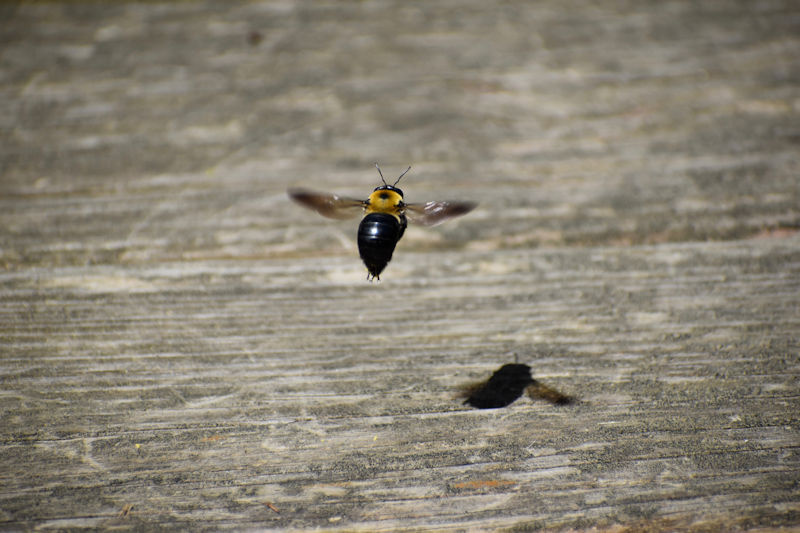Carpenter bees are burrowing insects that can do serious damage to a home. Since these bees are drawn to untreated, weathered wood, wooden structures in Southern Maryland and Northern Virginia are especially susceptible. Knowing how to keep these pests away is the first step in preventing an infestation in your home. In this guide, you will learn how to minimize the factors that draw carpenter bees to a given area and save yourself from costly repair work.
Tending to Repairs
The first step to preventing carpenter bees is inspecting and maintaining wooden structures. Check your decks, eaves, and siding for the small round holes or sawdust commonly associated with carpenter bee activity. Follow these steps to secure your home:
- Fix Damage Immediately: Use wood putty to fill in holes and sand the surface smooth.
- Seal the Wood: Paint or stain exposed wood to create a barrier that repels bees.
- Upgrade Materials: Use pressure-treated or composite materials instead of untreated wood. Carpenter bees are much less likely to nest in these materials.
Adequate Ventilation and Drainage
Carpenter bees are drawn to wet wood. Improve your home’s ventilation and drainage to keep moisture from building up:
- Humidity Control: Use attic vents or dehumidifiers in crawl spaces and attics.
- Drainage: Keep gutters and downspouts clear, directing water away from your home. Repair pooling water around the foundation to prevent wood rot.
Carpenter bees are less likely to infest dry, well-maintained wood.
Landscaping Tips
Carpenter bees will also be affected by your landscaping. To help prevent them, follow these tips:
- Plant Bee-Repellent Vegetation: Add plants like eucalyptus, mint, or citronella around your house to repel carpenter bees.
- Trim Vegetation: Avoid trees and shrubs growing close to wooden structures to limit moisture retention and access points.
- Keep Your Yard Clean: Regularly mow your lawn, trim overgrown areas, and clear debris to avoid creating potential nesting environments.
Using Preventative Products
You can deter carpenter bees from coming near your home with preventative treatments. Here’s how to get the best results:
- Apply Bee-Repellent Sprays: Spray wooden surfaces with repellents containing essential oils or chemicals that bees dislike.
- Follow Safety Guidelines: Wear gloves and masks during application and ensure the area is ventilated.
- Reapply as Needed: Repeat applications as necessary to maintain effectiveness.
Conclusion
A combination of preventive maintenance, proper ventilation, landscaping improvements, and the use of preventative treatments can help avoid carpenter bee infestations. Staying proactive can save homeowners in Southern Maryland and Northern Virginia from costly damage and repairs. Regular inspections, sealing wooden surfaces, planting bee-repellent vegetation, and applying protective sprays are straightforward and effective strategies.
FAQs
Q: What are the signs of a carpenter bee infestation?
A: Look for circular holes in wood, sawdust piles near these holes, and large bees hovering around wooden surfaces.
Q: How often should I inspect my home for carpenter bee damage?
A; Inspect your home at least twice a year, ideally in early spring and late summer, to catch infestations early.
Q:Are carpenter bees dangerous to humans?
A: Carpenter bees rarely sting and are not aggressive. However, their tunneling can cause significant damage to wooden features.
Q: Can natural remedies work to repel carpenter bees?
A: Yes, planting eucalyptus, mint, or citronella and using essential oils like tea tree or eucalyptus can help deter carpenter bees.
Q: What should I do if I find a carpenter bee nest?
A: Contact a pest control service to safely remove the nest and prevent future infestations.
References
NEED HELP?
If you live in Southern Maryland, or Northern Virginia
FIND YOUR SOLUTION HERE
People, Pet & Pollinator Safe! Pest control for people who care.
